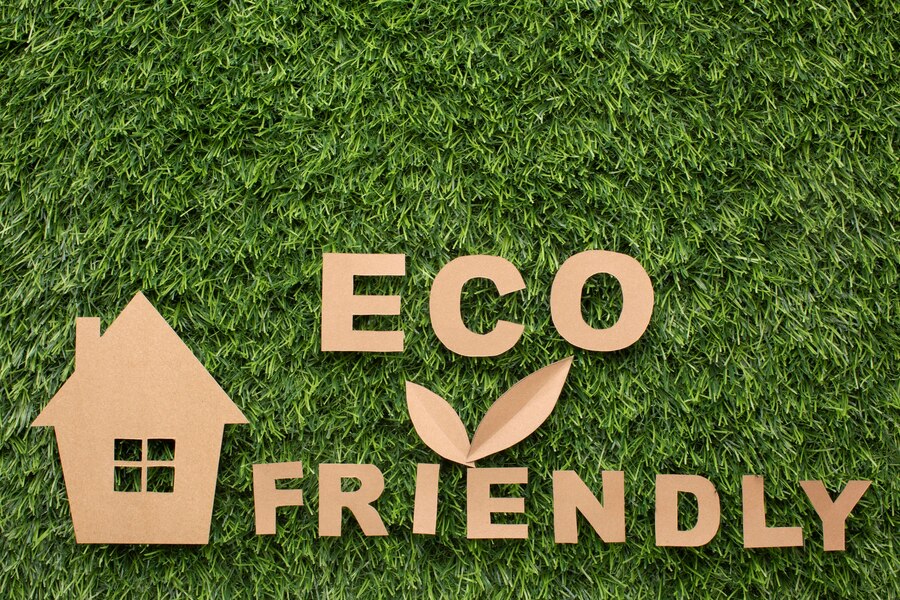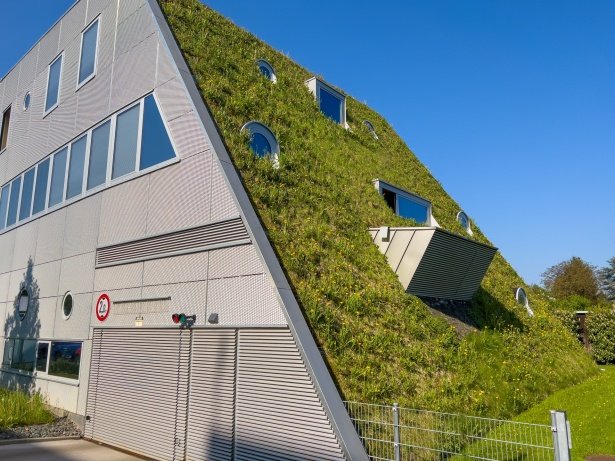Why Is Green Living Important? Benefits Your Life and the Planet
Sustainable living is more than just a trend that has gained traction in recent years—it’s a lifestyle that prioritises environmental sustainability, conservation efforts, and green practices. Over the past one hundred years, human activities have severely impacted our planet. As the global population continues to increase, the demand for food and resources has led to the exploitation of our natural resources. From deforestation to industrialisation, we are losing natural forests, increasing greenhouse gas emissions, which contribute to climate change. To mitigate climate change and ensure a sustainable future, we must take responsible actions that promote sustainability.
Green living is beneficial to the environment and human health. It aims to protect wildlife, especially endangered species and their natural habitats. Green living practices are focused on preserving resources, reducing waste and pollution, conserving energy, and promoting biodiversity.

In This Article
- What Is Green Living?
- Why Is Green Living Important?
- The Global Impact of Green Living: Case Studies
- The Benefits of Sustainable Living
- Expert Insights: Why Sustainable Living Matters
- Sustainable Practices to Incorporate Into Daily Life
- The Long-Term Benefits of Green Living
- Conclusion
What Is Green Living?
Green living is a sustainable approach to life that focuses on promoting environmental sustainability. It aims to conserve resources and reduce waste generation and pollution through sustainable practices. The green lifestyle encompasses simple, sustainable habits such as water conservation, use of renewable energy, recycling, reusing, composting food waste, growing food organically, and more. Adapting to a sustainable lifestyle may take a little time, but every small step towards sustainability is worth it.
Green living is a collective effort, involving governments, corporations, communities and individuals. Everyone has a role to play in building a more sustainable world.
Why Is Green Living Important?
The world we live in today faces several environmental challenges, including climate change, plastic pollution, extreme weather events, and biodiversity loss. Our current ecological situation requires immediate attention. This is where the concept of green living comes in. It addresses these challenges by promoting sustainable practices to ensure environmental sustainability.
Key Reasons Green Living Is Essential
i. Combating Climate Change
The burning of fossil fuels (for energy, industry, and transportation) and deforestation are the primary causes of human-induced climate change. Rapid industrialisation, mining, and other activities have contributed to rising global temperatures and melting ice caps. We have also seen changes in weather patterns in the last few decades. According to the Intergovernmental Panel on Climate Change (IPCC), without immediate action to reduce carbon emissions, our planet could see a temperature rise of up to 4 degrees Celsius (39.2 degrees Fahrenheit) by the end of the century. This is why adopting sustainable living is crucial to mitigate the effects of climate change.
ii. Preserving Ecosystems and Biodiversity
Human activities have severely altered ecosystems, driving many species toward extinction. The World Wildlife Fund’s (WWF) Living Planet Report 2020 revealed that the global population of mammals, fish, birds, amphibians, and reptiles have reduced by 68% since 1970. We can help the population of these species recover by supporting conservation efforts to protect wildlife and restore ecosystems.
iii. Improve Health and Well-being
Adopting a sustainable lifestyle can lead to a healthier life. Choosing eco-friendly cleaning products, for example, reduces the risk of exposure to toxic chemicals commonly found in conventional household cleaners. These harmful chemicals can degrade indoor air quality and cause respiratory issues. Green cleaning products are safe to use indoors and pose no threat to the environment or human health.
Learn More: 12 Best Green Resolutions for Every Month
The Global Impact of Green Living: Case Studies
#1. Sweden’s Commitment to Renewable Energy
Sweden is at the forefront of efforts to become a carbon-neutral nation in the next few decades. The Scandinavian country is a global leader in renewable energy, with over 54% of its energy needs being met by renewable sources. By incentivising the adoption of solar power, wind energy, and hydropower, Sweden is paving the way for a greener future.
#2. Costa Rica’s Forest Conservation Efforts
Costa Rica’s conservation effort to preserve its natural forest shows its commitment to environmental sustainability. The government implemented green programs to reverse deforestation, protect biodiversity and create carbon sinks. Incentives for reforestation have contributed to a 25% increase in forest coverage over the last 30 years. Additionally, Costa Rica generated over 98% of its electricity from renewable sources in 2021, which is no surprise for the greenest nation in Central America.
#3. Denmark’s Green Architecture and Urban Planning
Denmark’s Capital, Copenhagen, is one of the greenest cities in the world, thanks to its sustainable urban design and commitment to green architecture. The city has invested in public transportation, bike lanes, and energy-efficient buildings. Copenhagen aims to become carbon-neutral by 2025, and this is achievable through its innovative sustainable strategies. Other major cities can draw valuable lessons from Copenhagen’s sustainability blueprint.
The Benefits of Sustainable Living
Let’s look at some of the key benefits of green living.
#1. Conserving Natural Resources
Sustainable living prioritises the conservation of the Earth’s natural resources through recycling. Recycling helps conserve resources and minimise the energy-intensive production process that contributes to carbon emissions. According to the U.S. Environmental Protection Agency (EPA), recycling a ton of paper can save about 17 trees in natural forests and conserve up to 7,000 gallons of water.

#2. Reducing Pollution
Air and water pollution are among the most pressing environmental issues the world faces today. According to the World Health Organisation (WHO), air pollution is responsible for about 7 million premature deaths globally each year.
Green living presents an opportunity to reduce global pollution. We can all contribute to reducing pollution by opting for renewable energy sources, reducing our reliance on fossil fuels, recycling more, and practising proper waste management. Innovations like electric vehicles, which are gaining popularity, offer greener alternatives to gasoline-powered, CO2-emitting vehicles.

#3. Preserving Biodiversity
Biodiversity is important for ecosystem health and resilience. The loss of species or decline in population can disrupt the stability of ecosystems, which are essential for human survival. Deforestation, pollution, and continuous unsustainable agricultural practices have led to the destruction of the natural habitats of wildlife.
These trends can be reversed through sustainable practices that promote conservation efforts and responsible land use. We can learn from Costa Rica’s conservation efforts to preserve its natural forests. Adopting sustainable agricultural practices will also help preserve biodiversity.

#4. Mitigating Climate Change
Global temperature is at an all-time high due to climate change. We have seen extreme weather events lately—from long-lasting droughts to heavy rainfall in regions where it rarely rains—that raise serious concerns about the effects of climate change. Green living plays a crucial role in the fight against global warming, but a significant change can only be achieved when all parties are involved.
Research from the International Energy Agency (IEA) shows that a shift in renewable energy could reduce global greenhouse gas emissions by 70% in the next few decades. Individual preferences to adopt green living by opting for green transportation methods like biking, using public transportation, or walking can also help cut down on CO2 emissions.
#5. Improving Air and Water Quality
The continuous burning of fossil fuels contributes to poor air quality in major cities around the world. Fossil fuel-powered transportation systems release harmful pollutants like nitrogen oxides and sulfur oxides into the atmosphere, which can cause respiratory health problems over time. However, we can reduce the rate at which these pollutants are released into the atmosphere by opting for green transportation alternatives.
Conventional agricultural practices can also contaminate nearby water bodies with the use of synthetic pesticides and fertilisers. Growing crops organically, without harmful chemicals, can help prevent this contamination.
Learn More: 10 Sustainable Food Practices Examples: A Comprehensive Guide to Green Living
Expert Insights: Why Sustainable Living Matters
Let’s look at some opinions of environmental experts on sustainable living and its benefits to the environment and human health.
- Dr Jane Goodall, an English anthropologist, primatologist, and zoologist, emphasises the importance of individual actions to promote environmental sustainability. In her words, “Every individual matters. Every individual has a role to play. Every individual makes a difference,” she says. Goodall’s work in conservation shows how small actions can lead to substantial environmental change.
- Paul Hawken is an American author, activist, and environmentalist who strongly advocates for practical solutions to climate change. Hawken’s works focus on reducing carbon emissions through energy efficiency, regenerative agriculture, and renewable energy. According to Hawken, “We have the means to reverse global warming,” He states. “We just need the will to act.”
- Kate Raworth is an English economist and author of “Drought Economics”. Raworth’s model emphasises the importance of creating economic systems that meet human needs without overburdening our natural resources “We need to create economies that make us thrive while ensuring the planet remains habitable,” she says.
Sustainable Practices to Incorporate Into Daily Life
Let’s explore important sustainable practices for living sustainably.
#1. Energy Conservation
Conserving energy is one of the effective ways to lower our carbon footprint. Simple actions like turning off light bulbs and unplugging appliances when not in use help conserve energy. Many homeowners are cutting down their utility bills by investing in energy-efficient appliances. Some businesses, farms, and homes are even going off the grid by installing solar panels.
#2. Waste Reduction
Recycling, repurposing, and composting provide solutions to reduce waste. According to the U.S. Environmental Protection Agency (EPA), the United States alone generates over 292 million tons of municipal solid waste each year. Without recycling, more of this waste will end up in landfills or the ocean. Recycling is not just reducing solid waste; it also conserves resources, hence reducing the rate at which raw materials are extracted to make new products.
Composting is a better alternative to organic waste, especially food scraps and yard trimmings. It reduces methane emissions in landfills and provides rich compost for organic farming.
#3. Sustainable Transportation
Electric vehicles (EVs) are quickly replacing gasoline cars in different European countries like Norway, Denmark, Sweden, Switzerland, the Netherlands, and Luxembourg. While EVs may come at a steep price, it’s worth the investment considering the long-term environmental benefits. If buying an electric car isn’t feasible, consider using public transportation, biking, walking or carpooling to reduce your carbon footprint.
#4. Supporting Sustainable Agriculture
Eating locally sourced food or switching to a plant-based diet is more sustainable than relying on processed foods. Supporting organic farming can also help reduce the environmental impact of conventional agriculture. A study published in Nutrients discovered that plant-based diets can reduce food-related greenhouse gas emissions by up to 70%. Growing organic food in your garden or farm is also part of sustainable agriculture.
#5. Water Conservation
Water is one of the most valuable resources on our planet, and it should be conserved even when it seems abundant. How do you conserve water? This can be done by fixing leaks, reducing shower time, installing low-flow shower heads and faucets, and setting up rainwater harvesting systems.
Learn More: The Role of AI in Promoting Sustainable Living
The Long-Term Benefits of Green Living
#1. Economic Savings
Adopting a sustainable lifestyle can lead to economic benefits. For example, investing in energy-efficient appliances can help lower your utility bills. Installing renewable energy sources like solar power can potentially eliminate them altogether.
A report by the Rocky Mountain Institute discovered that energy efficiency measures could save the United States about $700 billion annually. Moreover, green initiatives also stimulate local economies by creating employment opportunities. According to the International Labour Organisation (ILO), the green economy could create over 24 million new jobs worldwide by 2030.
#2. Improves Quality of Life
Living a sustainable lifestyle improves our physical and mental health. Recent studies have shown that spending more time in nature can help reduce stress, improve cognitive function and boost mood.
Additionally, green living fosters a sense of community, building relationships through local initiatives like community gardens, campaigns, farmers’ markets, and tree-planting initiatives.
Conclusion
Green living is more than just a trend that promotes environmental sustainability—it’s a holistic approach that benefits the environment, human health, economy, and wildlife. Adopting sustainable practices should be a collective effort, with everyone playing a part in mitigating climate change.
Dr Jane Goodall once said, “What you do makes a difference, and you have to decide what kind of difference you want to make.” It’s our shared responsibility to make a positive impact on a sustainable future.







